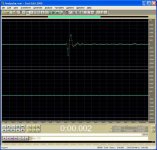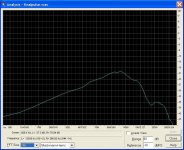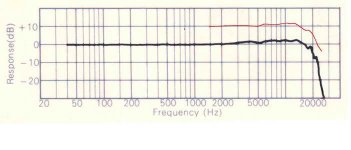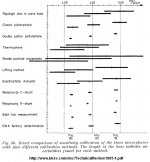It may be time to resurrect N-rays and their role in audio.Bursting people's balloons is something for which we scientists have a reputation. We forget that some people don't actually want the right answer; they would rather fail magnificently than succeed boringly.
To clarify,
Thanks for clarifying.
I was sure that I had misunderstood you, as with my initial assumption the time frame was in the sub nano second range, an area that your pragmatism would prohibit you from entering.
If you find the time, please post a link to your published results.
George
I note that you still resist any attempt at elimination or control of the confounding physics effects which severely compromise your test. Why?
jn
Ed - I had the same comments about some of the wire distortion tests, namely the needlessly large background noise that had to be ignored. We do offer these criticisms in the spirt of helping and getting to the bottom of things.
Thanks for clarifying.
I was sure that I had misunderstood you, as with my initial assumption the time frame was in the sub nano second range, an area that your pragmatism would prohibit you from entering.
If you find the time, please post a link to your published results.
George
It's buried in some online archive. Here's the pictures
EDIT - The red line is my measurement offset by 10dB. My original reference had a less sophisticated derivation of the high frequency effects but was still accurate to 20K or so, you can sort of see the first Bessel null just before 30kHz
Attachments
Last edited:
We do offer these criticisms in the spirt of helping and getting to the bottom of things.
I have always assumed that as well.
jn
It's buried in some online archive
http://wavebourn.com/images/audio/Proins/spark.pdf
Good. You have used the noise generated by the spark to produce a wide band acoustic signal with consistent and repeatable signature for to measure the frequency response of the Nakamichi CP3 microphone.
You verified the results (red curve) against the manufacturer’s data (black curve)
In your “to do list” is to repeat the same procedure but with one (or more) capacitor(s) in place of the CP3.
Yes?
George
I think you will find that French audio high-end people still understand and use N-rays. The rest of us have to manage without them, as they are not taught in English-speaking universities. Not Invented Here syndrome, I assume. We make an exception for Fourier, of course, although some audiophiles seem to (think they can) manage without him.bcarso said:It may be time to resurrect N-rays and their role in audio.
http://wavebourn.com/images/audio/Proins/spark.pdf
Good. You have used the noise generated by the spark to produce a wide band acoustic signal with consistent and repeatable signature for to measure the frequency response of the Nakamichi CP3 microphone.
You verified the results (red curve) against the manufacturer’s data (black curve)
In your “to do list” is to repeat the same procedure but with one (or more) capacitor(s) in place of the CP3.
Yes?
George
Yes, and I think this and my DIY piston chamber might make a good short article.
The problem is level. In the port of a reflex enclosure, I would expect one heck of a high spl, so the counter argument would be it's not sufficient compression.In your “to do list” is to repeat the same procedure but with one (or more) capacitor(s) in place of the CP3.
Yes?
George
Ed should just overwrap braid on the cap to get the far connection to the coax braid.
Then test with both zero voltage and 25 volts on the cap. If there is a measured signal and it is independent of capacitor voltage, then it is induced by the magnetic field, either by the changing magnetic field loop trapped, or by physical modulation of the loop within the static magnetic field of the speaker (or the half gauss field of the earth).
So simple, yet so hard.
jn
We make an exception for Fourier, of course, although some audiophiles seem to (think they can) manage without him.
I visited his tomb in Paris.
Or you could just place a bunch of capacitors and say a resistor or two on a shaker table.
The table probably has huge magnetics, all your wires are moving violently in any fields present, etc. How about the tap test?
How about the tap test?
Far too simple.
Did you visit Blondlot's tomb as well?
This is the sort of thing my colleagues and I discuss in private. It's far beyond the level of what can be talked about here and is based on classified military developments that I did when I worked as a consultant to Einstein. Just the other day, Scott called me from his Rolls-Royce to discuss these issues. We did this 30 years ago. Works for me! ;-)
Yes, and I think this and my DIY piston chamber might make a good short article.
(If one of these has escaped your attention…)
http://www.bksv.com/doc/bv0054.pdf
http://www.bksv.com/doc/bv0051.pdf
http://www.bksv.com/doc/bv0048.pdf
http://www.bksv.com/doc/TechnicalReview1985-4.pdf
http://www.bksv.com/doc/bv0015.pdf
http://www.bksv.com/doc/TechnicalReview1977-4.pdf
http://www.bksv.com/doc/TechnicalReview1964-4.pdf
http://www.bksv.com/doc/TechnicalReview1965-1.pdf
http://www.bksv.com/doc/be1447.pdf
George
Attachments
- Status
- Not open for further replies.
- Home
- Member Areas
- The Lounge
- John Curl's Blowtorch preamplifier part II



